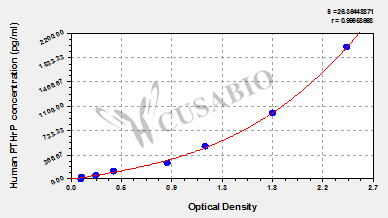The human PTHrP ELISA Kit is used to quantitatively measure PTHrP concentrations in human serum, plasma, or tissue homogenates. It performs well in important characteristics, including sensitivity, specificity, precision, recovery, linearity, and lot-to-lot consistency. This assay is based on the sandwich ELISA mechanism and enzyme-substrate chromogenic reaction. The solution color develops proportionally to the amount of PTHrP in the sample. And the intensity of the color can be measured at 450 nm via a microplate reader.
PTHrP (PTHLH) is expressed in a board of normal tissues and organs and exerts different functions on them. PTHrP and its receptor PTHR1 interaction are involved in a multitude of biological processes, including bone formation, bone remodeling, osteoblast apoptosis inhibition, regulation of calcium transport from blood to milk, regulation as well as of maternal calcium transport to the fetus, and reabsorption of calcium in kidneys. PTHrP modulates dental formation and mandibular development, relaxes the smooth muscle of the gastric fundus, stimulates insulin production, and regulates pancreatic cell proliferation, apoptosis, and differentiation.






